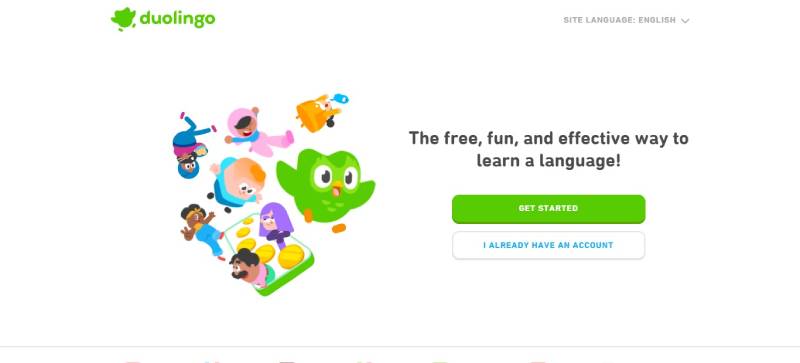Adobe Statistics You Need To Know About The Company

Ever dive into data that transforms the mundane into the magnificent? That’s the power of Adobe statistics—numbers painting a vivid picture of digital landscapes shaped by creativity and innovation.
Imagine flipping through a kaleidoscope where each shift reveals patterns in user demographics, spikes in software adoption rates, or bold strokes of market share insights.
Here, we peel back the layers of Adobe analytics, serving up a feast of metrics that spell out success, strategy, and the occasional stumbling block.
Visualize slicing through dense clouds of numbers to find the silver linings where Creative Cloud usage and PDF statistics soar.
You’ll leave armed with actionable customer insights and a savvy understanding of the financial performance driving one of the tech world’s most artistic titans.
Buckle up as we chart the course through digital trends and Adobe product analysis—this is the lifeline for your next design gamble.
Dive into a realm where data narrates tales of triumph and ingenuity…
Adobe Statistics To Check Out
Adobe Company:
- Adobe was founded in 1982.
- Adobe has over 22,000 employees worldwide.
- Adobe’s revenue in 2020 was $12.87 billion, in 2021 it was $15.79 billion, and in 2022 it was $17.61 billion.
- Adobe’s net income in 2020 was $3.03 billion, in 2021 it was $4.822B, and in 2022 it was $4.756B.
- Adobe’s market capitalization as of November 20, 2023, is $274 billion.
- Adobe is headquartered in San Jose, California.
- Adobe has offices in over 40 countries.
- Adobe has been named one of Fortune’s “100 Best Companies to Work For” for 20 consecutive years.
- Adobe was ranked #2 on Forbes’ “World’s Best Employers” list
- Adobe has been named one of the “World’s Most Innovative Companies” by Forbes for 11 consecutive years.
Adobe Products:
- Adobe Creative Cloud has over 22 million paid subscribers.
- Adobe Photoshop is used by over 90% of creative professionals worldwide.
- Adobe Illustrator is used by over 80% of creative professionals worldwide.
- Adobe Premiere Pro is used by over 50% of video professionals worldwide.
- Adobe Acrobat is used by over 90% of Fortune 500 companies.
- Adobe Experience Cloud has over 17,000 customers worldwide.
- Adobe Experience Manager is used by over 50% of Fortune 500 companies.
- Adobe Marketing Cloud has over 5,000 customers worldwide.
- Adobe Sign has over 8 million users worldwide.
- Adobe Stock has over 200 million assets available for licensing.
Adobe Company Activity:
- Adobe has acquired over 70 companies since 1982.
- Adobe donated $1 million to the World Health Organization’s COVID-19 Solidarity Response Fund in 2020.
- Adobe has committed to achieving net-zero emissions by 2050.
- Adobe has been recognized as a leader in corporate sustainability by the Dow Jones Sustainability Index for six consecutive years.
- Adobe has a 100% rating on the Human Rights Campaign’s Corporate Equality Index.
- Adobe has committed to achieving gender pay parity by 2022.
- Adobe has committed to achieving racial and ethnic pay parity by 2022.
- Adobe has a goal of achieving 30% Black and Latinx representation in leadership roles by 2023.
- Adobe has a goal of achieving 50% female representation in leadership roles by 2025.
- Adobe has a goal of achieving 33% underrepresented minority representation in leadership roles by 2025.
Adobe Analytics:
- Adobe Analytics is used by over 20,000 companies worldwide.
- Adobe Analytics processes over 200 billion transactions per quarter.
- Adobe Analytics has over 100 data connectors.
- Adobe Analytics has a 99.9% uptime guarantee.
- Adobe Analytics has a customer satisfaction rating of 97%.
- Adobe Analytics has won the “Leader” designation in Gartner’s Magic Quadrant for Digital Marketing Analytics for eight consecutive years.
- Adobe Analytics has won the “Best Web Analytics Solution” award from the Software and Information Industry Association for six consecutive years.
- Adobe Analytics has a mobile app that allows users to access their data on the go.
- Adobe Analytics has a real-time dashboard that allows users to monitor their data in real-time.
- Adobe Analytics has a machine learning feature that can automatically identify trends and anomalies in data.
Adobe Target:
- Adobe Target is used by over 2,000 companies worldwide.
- Adobe Target has a customer satisfaction rating of 95%.
- Adobe Target has a machine learning feature that can automatically personalize content for individual users.
- Adobe Target has won the “Leader” designation in Gartner’s Magic Quadrant for Personalization Engines for three consecutive years.
- Adobe Target has a mobile app that allows users to manage their campaigns on the go.
- Adobe Target has a real-time dashboard that allows users to monitor their campaigns in real-time.
- Adobe Target has a feature that allows users to create A/B tests without the need for coding.
- Adobe Target has a feature that allows users to create personalized experiences based on a user’s behavior on their website.
- Adobe Target has a feature that allows users to create personalized experiences based on a user’s location.
- Adobe Target has a feature that allows users to create personalized experiences based on a user’s device type.
FAQ On Adobe Statistics
How does Adobe measure its software adoption rates?
Adobe looks at a mix of user demographics, subscription sign-ups, and analytics reports to track software uptake. It’s a numbers game – think downloads, activations, and even social buzz. They need to know who’s biting, and which apps have people talking.
What insights do Adobe analytics provide about customer behavior?
Customer insights from Adobe are like a gold mine for marketers. They show how users interact with software—time spent, features used, and preferences—tailored stuff. These juicy details help shape future products and keep Adobe ahead of the curve.
What are Adobe’s market share statistics in the creative software industry?
Well, Adobe’s the big cheese in creativity – its market share is towering. But, competitors comparison metrics are crucial. They keep tabs on this through financial reports, sales data, and industry benchmarks to maintain their edge.
Can Adobe statistics help in predicting digital media trends?
Absolutely. Mining through Adobe’s metrics is like forecasting weather – you get hints on what’s next. Their data on usage patterns can flag up-and-coming digital trends in design and multimedia. Trust me, Adobe’s data holds clues to the future.
What type of performance metrics are available for Adobe products?
Adobe’s performance metrics gauge everything—from speed to stability. Users need tools that won’t crash mid-masterpiece, right? These stats keep tabs on performance, ensuring creatives aren’t left hanging when inspiration strikes.
How does Adobe track user experience metrics?
User experience is king, so Adobe’s metrics keep a look out for user satisfaction, ease of use, and intuitiveness. They dig deep into how people navigate their software—looking for smooth sailing or choppy waters. It’s about keeping it slick and user-friendly.
How strong is the growth of Adobe Creative Cloud?
The growth is impressive, sailing on a strong wind of Creative Suite growth. By focusing on cloud-based services and regular updates, they’re pulling in focused creatives and mobile warriors alike. Every quarter’s financials show more folks joining the Creative Cloud.
What role do customer conversion rates play in Adobe statistics?
Conversions are the jackpot—signifying a trial user struck gold and went premium. Adobe keeps an eye on this to tweak marketing strategies and user engagement. Better conversion rates? That’s a high-five moment in the conference room.
How does Adobe use statistics in product development?
Think of Adobe statistics as a compass guiding the ship. They tell you if you’re off-course or on the money when it comes to features and user satisfaction. Developers aren’t just throwing darts blindfolded; they’re tailoring innovations based on solid data.
What statistics highlight the success of Adobe’s mobile applications?
With everyone glued to their phones, cross-platform usage stats are a biggie. Adobe measures downloads, active users, and feature engagement on mobile. They’re crunching those numbers to make sure their mobile apps don’t just float; they sail.
Conclusion
Weaving through the Adobe statistics, we find ourselves at a crossroad where creativity marries data, revealing a fabric of brilliant patterns. It’s here that we grasp the sheer magnitude of Adobe’s market share and the influential role of digital trends.
- We’ve dissected the marrow of Adobe analytics, etching out performance metrics into our design-thinking skulls.
- Witnessed the steady climb of Creative Cloud usage in, let’s be real, a stunning visual graph that could pass for modern art.
It’s that very concoction of product engagement and customer insights that fuels not just numbers on a spreadsheet but the pulse of innovation. We know now that Adobe statistics are not just cold, hard facts; they’re the whispers of future design revolutions.
So, hone these revelations to sharpen your creative edge. Let these stats be your lighthouse in an often foggy digital sea, guiding you to a harbor of informed, inspired design choices.
If you liked this article about Adobe statistics, you should check out this article about Alibaba statistics.
There are also similar articles discussing Amazon statistics, AMD statistics, Apple statistics, and Cisco statistics.
And let’s not forget about articles on Facebook statistics, IBM statistics, Intel statistics, and Microsoft statistics.








